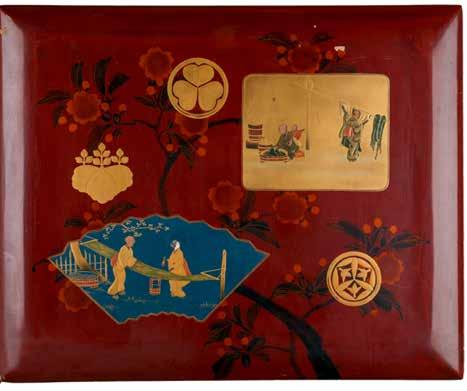The spirit of the samurai in a contemporary world: an interview with Tenmyouya Hisashi
Interview by Russell Kelty
Tenmyouya Hisashi 天明屋尚様 is a Japanese contemporary artist and art theorist whose paintings and installations engage with the history of Japanese art and expose lost narratives. His practice imbues media that are often perceived as historic with a distinctly urban aesthetic and a disregard for existing proscriptions of taste. The world he creates is inhabited by motorcycle-riding provocateurs emblazoned on golden screens and images of Buddhas holding machine guns. Tenmyouya Hisashi has written at length about his painting style. In the early 2000s he formulated the neo-Nihonga concept, literally ‘new Japanese painting’, as an antithesis to modern Japanese painting influenced by European and American artistic trends. Tenmyouya was recognised, along with other artists, for utilising characteristic features of Japanese art in a contemporary fashion. He also conceived of the art concept BASARA, which focuses on works of art across the history of Japanese art that were considered flamboyant, extravagant and eccentric. According to Tenmyouya, this ‘reflects a samurai mentality rooted in the Japanese streets, BASARA contrasts the Western scheme of high and low art’, as well as otaku culture and wabi-sabi.1 For the exhibition Samurai at the Art Gallery of South Australia, Tenmyouya Hisashi, courtesy of the Mizuma Gallery, Tokyo, has lent a limited edition print which displays his engagement with a repository of flamboyant samurai imagery from nineteenth century woodblock prints.
Tenmyouya Hisashi, born Tokyo 1966, Conquest of the Karasu Tengu, from the series One hundred new ghost stories (shinkei hyaku monogatari: karasu tengu taiji no zu), 2005, Tokyo, inkjet print, edition of 50 ©️ Tenmyouya Hisashi, Courtesy of Mizuma Art Gallery 1 <http://tenmyouya.com/biography/profile.html>
88

















